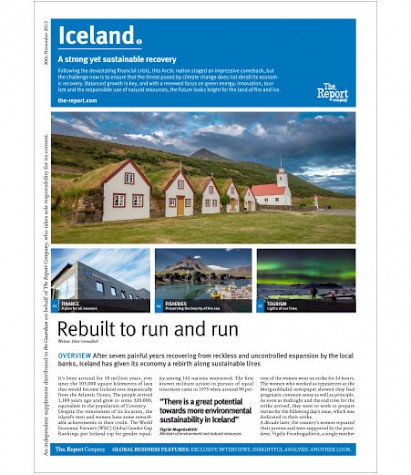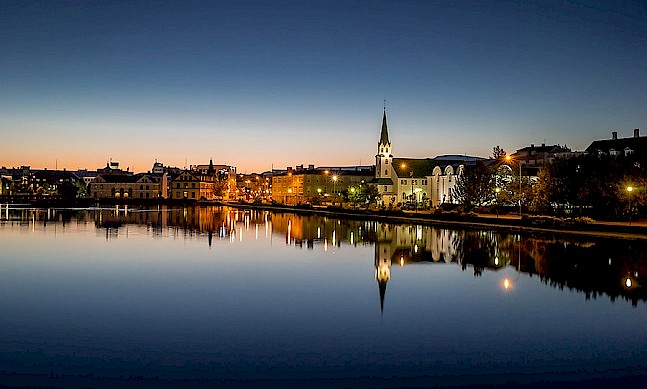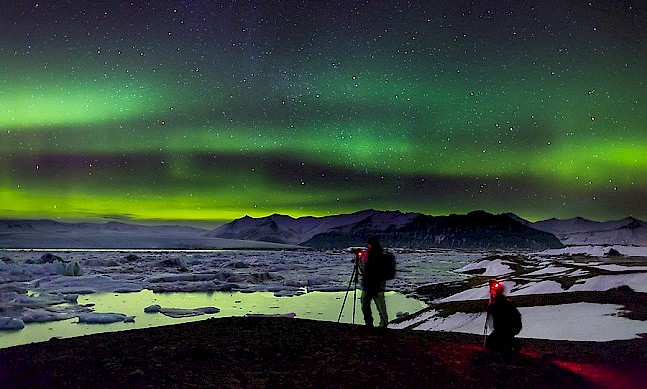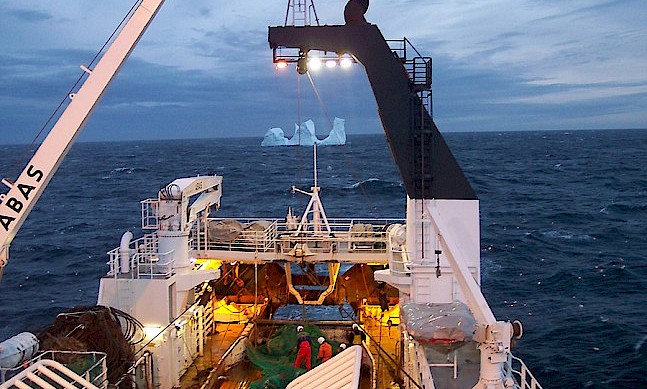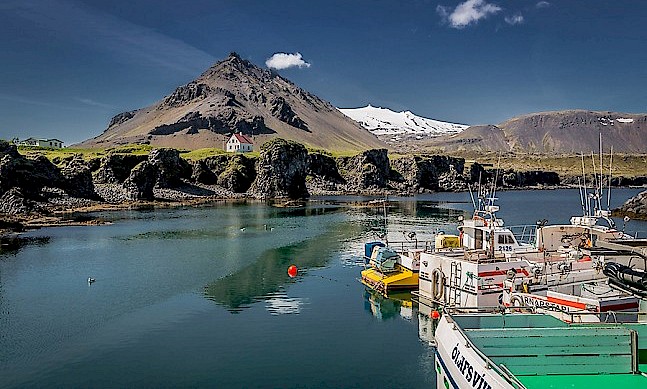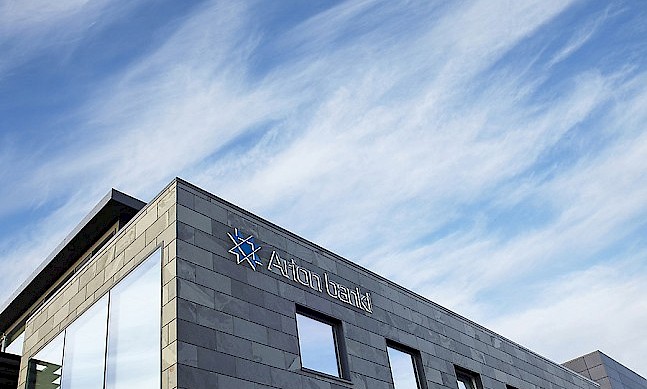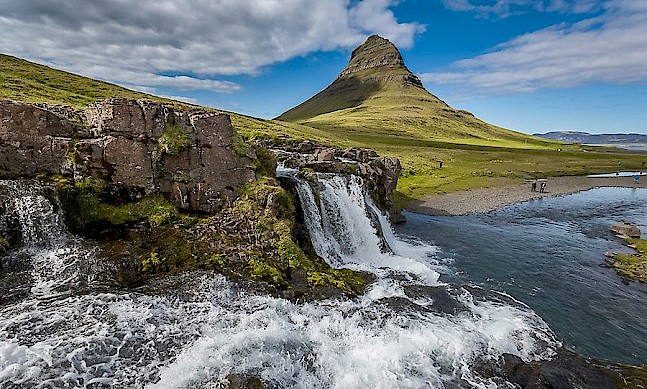Icelandic economist Mar Gudmunsson has led the country’s central bank since August 2009, and has been instrumental in steering the nation’s economy along the path of post-crisis economy. The Report Company interviewed him in Reykjavík, where he discussed the main challenges and opportunities.
The Report Company: What challenges have you faced since taking over this role?
Mar Gudmunsson: The main challenge that we have faced is to make sure that Iceland comes out of the recovery period with a well-balanced economy. There was the concern that given the size of the shocks that we were hit with, which took the krona down around a third, we would not recover or balance the economy.
We lost something like 11 percent of GDP from top to bottom during the crisis. We have recovered all of that. But the difference now is that the economy is much better balanced. We had an unsustainable current account deficit, measured in double figures as a proportion of GDP, a very overheated economy, and inflation that was above target. Now we have an economy with a very significant current account surplus, a balanced budget and inflation that is below target.
The challenge going forward is to keep this balance. At this point in time, our concern is that wages have increased very significantly, we’re talking about a ten percent increase in wages between years and that is more than can over the longer term be compatible with the inflation target that we have of 2.5 percent, We have started to tighten monetary policy as a kind of pre-emptive measure in order to make sure that this is a controlled process.
“We will not allow the banks to go on wild adventures abroad to the same degree as they did before”Tweet This
TRC: Moody’s and Fitch Ratings have both recently upgraded Iceland’s rating. What does this mean for the country?
MG: It means that Iceland is regaining its access to foreign capital markets again. The problem that we faced after the crisis, and the reason that we introduced capital controls, was that the only entity that had access to foreign capital markets was the state. Now we are breaking out of this situation, which is key to Iceland’s recovery. We also announced in June that we will deal with the main obstacles for lifting capital controls, which are the resolution of the old banks and the overhang of krona positions in the hands of foreigners that were locked inside the country after the currency and banking crises struck in 2008. This has been very well received and we see that there is more trust in Iceland.
We have been facing strong capital inflows recently; the Central Bank has bought foreign currency in the foreign exchange market in Iceland to the tune of six or seven percent of GDP already this year. This is indeed very good news.
TRC: What do you think will happen when the capital controls are completely lifted?
MG: The concern has always been that if we proceed too fast, we might face outflow pressures, but this is not a foregone conclusion. Icelandic pension funds, Icelandic households to a certain degree, and Icelandic companies need to rebalance their balance sheets. They have not been able to invest abroad now for almost seven years and there is pent-up demand, so there will be outflows because of that. However, looking at where we are now and how things have developed, we could as well be facing very significant inflows that would counterbalance outflows from domestic residents.
This is a good thing on the one hand but also problematic on the other because there are always, as we learned prior to the crisis, risks in large inflows. They complicate monetary policy in particular because interest rate decisions of the monetary policy committee of the Central Bank are less able to affect long term interest rates. We need to prepare for that and that is also why, although we are going to lift capital controls generally, it does not necessarily follow that we go back to exactly the same regime as we had prior to the crisis. We will take prudential measures for bank balance sheets, and foreign borrowing by individuals or municipalities which do not have foreign currency earnings will be tightened very significantly.
“From my standpoint, I would welcome the possibility that one of the old banks has a very significant foreign ownership”Tweet This
TRC: How do you see the banking landscape?
MG: A key aspect of our recovery after the crisis was to rebuild the banks, and we have done so. Icelandic banks are very well capitalised and their liquidity position is good, even though there will be some strain on liquidity when the old banks are unwound and we release the offshore krona out of the system. However, we will make sure that they will be able to withstand that.
Looking further ahead, I think that there are important issues that we need to think about in this country in terms of what kind of financial sector we want and need. Given the huge risks that exist in cross-border banking, especially if you are dealing with somebody else’s currency for which there is no lender of last resort in the country to back these operations, I think that what we need in the medium term is a banking system that is mostly domestically oriented. We will not allow the banks to go on wild adventures abroad to the same degree as they did before.
It is clear that when we lift the capital controls and the old banks are unwound, the current owners want to sell these banks, and that creates an opportunity for us to create a banking system which is more diverse in terms of ownership and in terms of business models than we had before the crisis. From my standpoint, I would welcome the possibility that one of these banks has a very significant foreign ownership. These are the big questions coming up. It will be very interesting to see how this plays out and for all the foreign investors that are interested in taking a position in the future of Iceland, there might be opportunities here for them in this whole process.
TRC: How do you see the potential of the tourism sector over the next five years as a contributor to the economy?
MG: Tourism has been a very welcome addition to the economy and is part of the reason why we have recovered as well as we have, but there are limits to the expansion of tourism and then you could argue that some of our tourism is relatively low value-added.
If you look at the fishing industry, while it is limited by the size of the fish stocks, there has been very significant productivity and product development in the fishing industry, so there is more value-added being created on the basis of a given fish. The same applies to some of the energy-intensive industries. I am not a strong believer in the public sector dictating what happens with our businesses, because you never know. You need to have space for entrepreneurship and innovation. Who for instance would have imagined 20 years ago that Iceland would boast a very developed biogenetic industry? I think that the key issue is to have good infrastructure and a sound financial system and a good environment for business generally, but it is often difficult to predict what opportunities will develop into something more.
TRC: What would be your message to potential investors in Iceland?
MG: We very much welcome investors and foreign companies in the real economic sector. However, I think not only we but also the international community more generally have to learn a lesson from the crisis. Iceland is after all a small place and there are limits to what we can accommodate in terms of capital inflows. Everybody should be aware that what we welcome are real economic investments rather than speculative flows, and one of the big challenges going forward will be how we are going to manage that. We welcome opportunities but we also need to be realistic in terms of what can be done here.


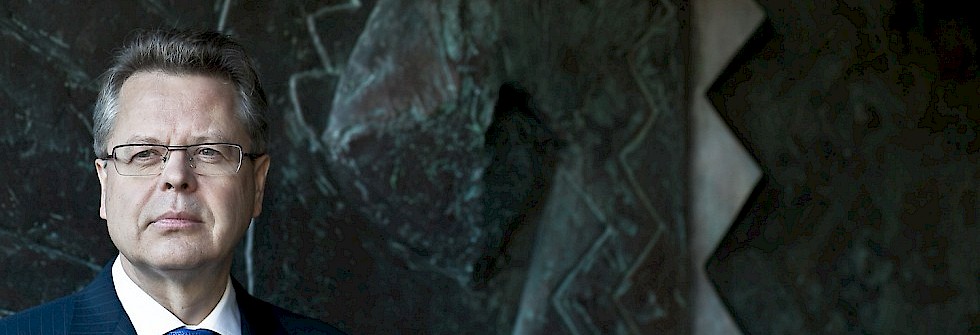 Mar Gudmunsson. Photo: Birgir Isleifur Gunnarsson
Mar Gudmunsson. Photo: Birgir Isleifur Gunnarsson
